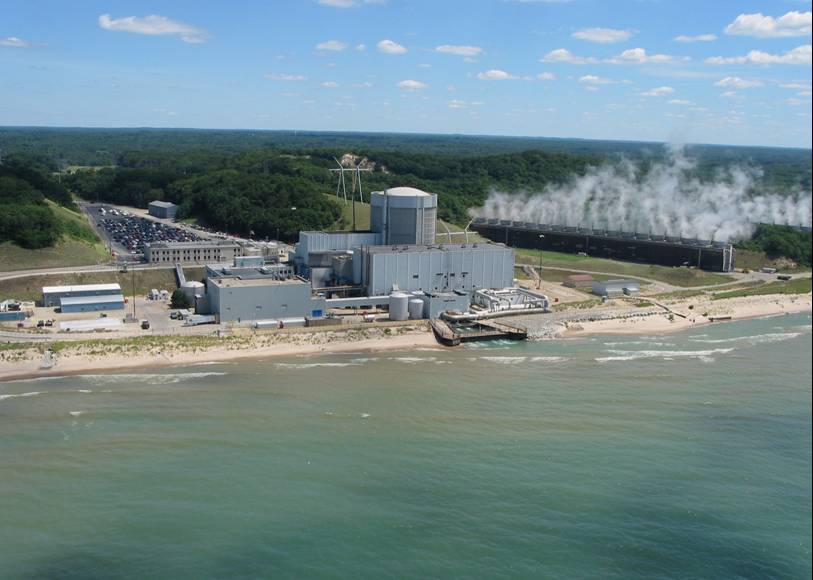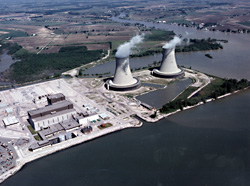Joseph Mangano/RPHP report on radioactivity releases from Palisades and increased death rates in the surrounding area
 August 21, 2013
August 21, 2013  Entergy's problem-plagued Palisades atomic reactor in Covert, MI, on the Lake Michigan shorelineJoseph Mangano, Executive Director of Radiation and Public Health Project, has published a report, commissioned and endorsed by Beyond Nuclear, Don't Waste Michigan, Michigan Safe Energy Future, and Nuclear Energy Information Service. Based on government data and documentation on radioactivity releases from Palisades, as well as area health statistics, the report's major findings raise serious questions about the connections between radioactivity releases and increased overall death and cancer mortality rates.
Entergy's problem-plagued Palisades atomic reactor in Covert, MI, on the Lake Michigan shorelineJoseph Mangano, Executive Director of Radiation and Public Health Project, has published a report, commissioned and endorsed by Beyond Nuclear, Don't Waste Michigan, Michigan Safe Energy Future, and Nuclear Energy Information Service. Based on government data and documentation on radioactivity releases from Palisades, as well as area health statistics, the report's major findings raise serious questions about the connections between radioactivity releases and increased overall death and cancer mortality rates.
Palisades received a U.S. Nuclear Regulatory Commission (NRC) rubber-stamp for 20 extended years of operations -- out to 2031 -- back in 2007, despite hard-fought resistance that sought to block it.
Full report: NUCLEAR CONTAMINATION AND HEALTH RISKS FROM THE ENTERGY PALISADES NUCLEAR REACTOR.
As stated in the press release:
"...Mangano’s main findings include that the Van Buren County death rate from all causes was 3 to 6 percent below the state in the 1970s and early 1980s, but has risen since, to a level 12.5% greater than Michigan (2003-2010). This change suggests that 1,330 “excess” deaths have occurred in the county since the Palisades atomic reactor started operating in 1971. Elevated levels were observed for all age groups (especially children/young adults), both genders, and all major causes of death..." (emphasis added).
Beyond Nuclear pamphlet "Routine Radiation Releases from U.S. Atomic Reators: What Are The Dangers?" Note that the water discharge pathway photo was taken (by Gabriela Bulisova) at the Palisades atomic reactor, discharging into Lake Michigan. Although the atmospheric discharge pathway was photographed at the Callaway atomic reactor in Missouri, Palisades has a very similar vent attached to its containment building for aerial discharges of radioactive gases and vapors).
Beyond Nuclear report (published April 2010) by Reactor Oversight Project Director Paul Gunter, "Leak First, Fix Later," with a chapter on Palisades' tritium leaks into groundwater, first reported by Entergy Nuclear in 2007.
 admin
admin
WWMT TV 3 Kalamazoo reported on this story -- including a short summary at noon, and a longer story on the evening news -- as have WSBT TV-22 South Bend, Indiana and ABC57 News South Bend, as well as WKZO Radio Kalamazoo. The Detroit News and Holland Sentinel published articles, as has the Kalamazoo Gazette/MLive. WKZO Radio also interviewed Kevin on Lori Moore's morning show on Wed., Aug. 21st.
 admin | Comments Off |
admin | Comments Off | 






